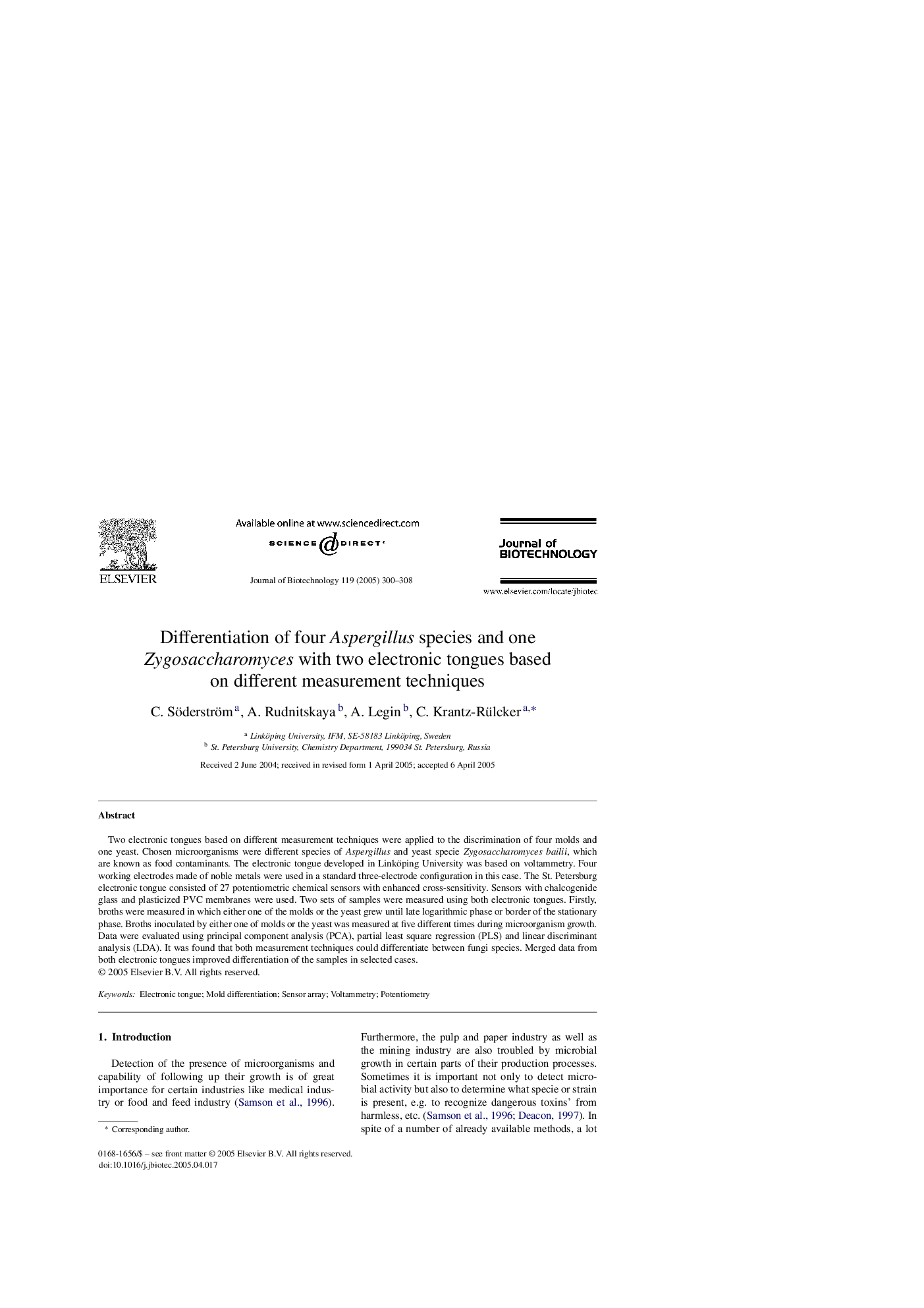| Article ID | Journal | Published Year | Pages | File Type |
|---|---|---|---|---|
| 9604288 | Journal of Biotechnology | 2005 | 9 Pages |
Abstract
Two electronic tongues based on different measurement techniques were applied to the discrimination of four molds and one yeast. Chosen microorganisms were different species of Aspergillus and yeast specie Zygosaccharomyces bailii, which are known as food contaminants. The electronic tongue developed in Linköping University was based on voltammetry. Four working electrodes made of noble metals were used in a standard three-electrode configuration in this case. The St. Petersburg electronic tongue consisted of 27 potentiometric chemical sensors with enhanced cross-sensitivity. Sensors with chalcogenide glass and plasticized PVC membranes were used. Two sets of samples were measured using both electronic tongues. Firstly, broths were measured in which either one of the molds or the yeast grew until late logarithmic phase or border of the stationary phase. Broths inoculated by either one of molds or the yeast was measured at five different times during microorganism growth. Data were evaluated using principal component analysis (PCA), partial least square regression (PLS) and linear discriminant analysis (LDA). It was found that both measurement techniques could differentiate between fungi species. Merged data from both electronic tongues improved differentiation of the samples in selected cases.
Related Topics
Physical Sciences and Engineering
Chemical Engineering
Bioengineering
Authors
C. Söderström, A. Rudnitskaya, A. Legin, C. Krantz-Rülcker,
